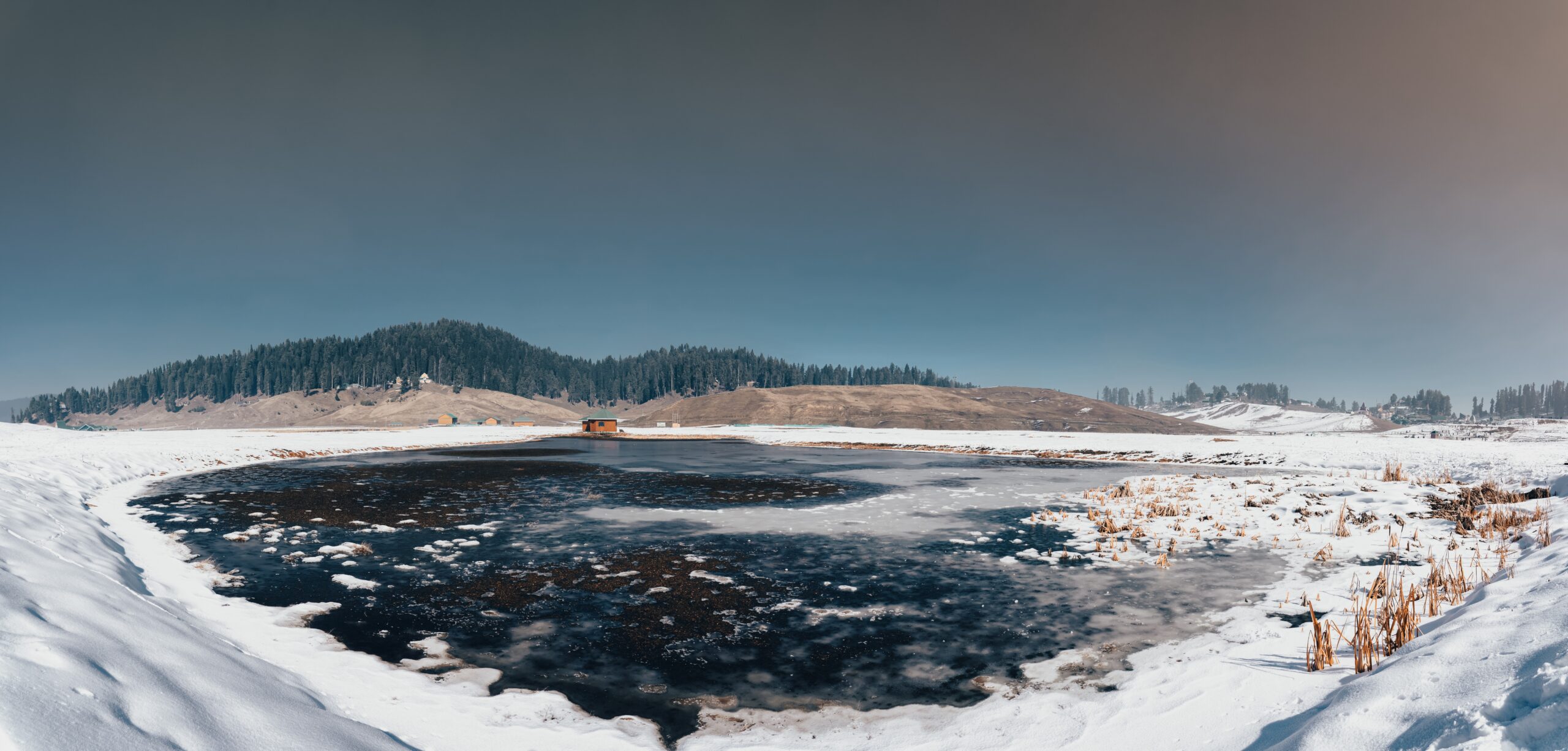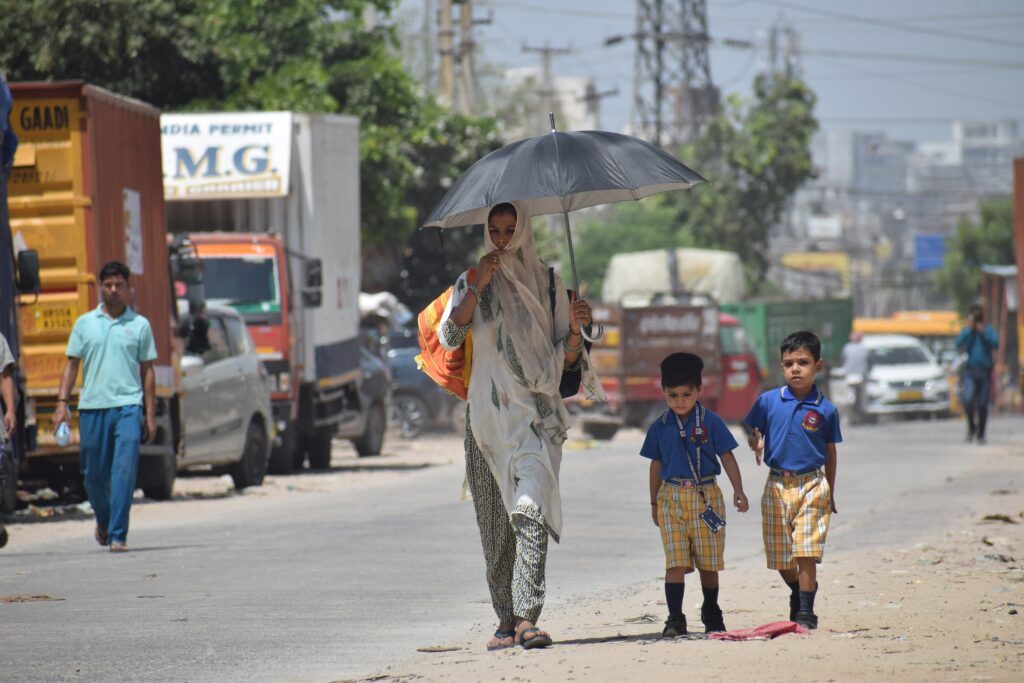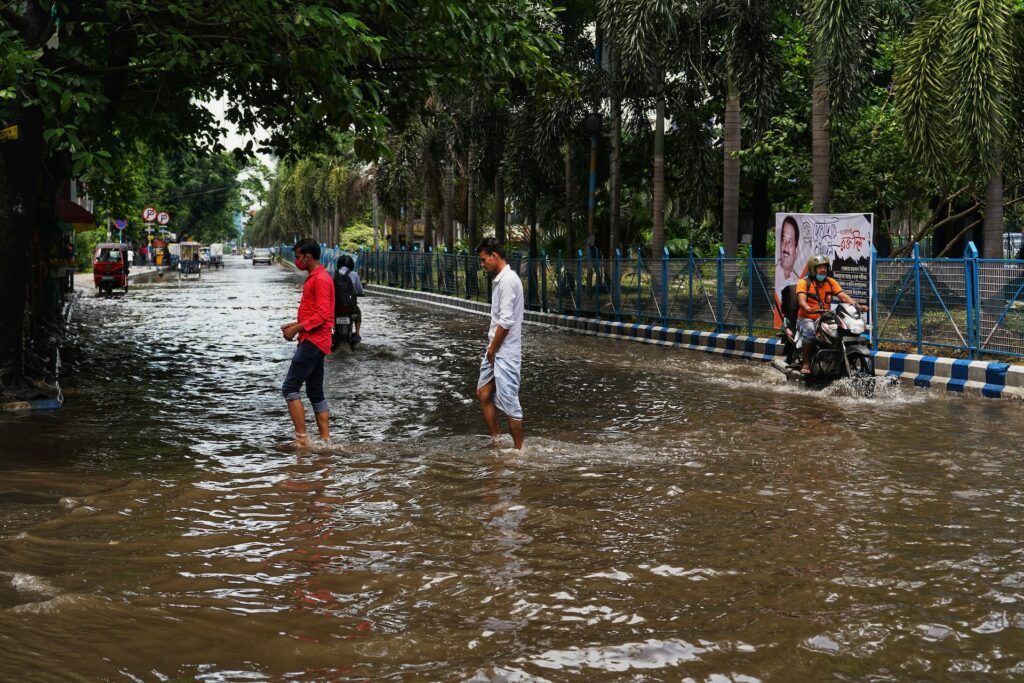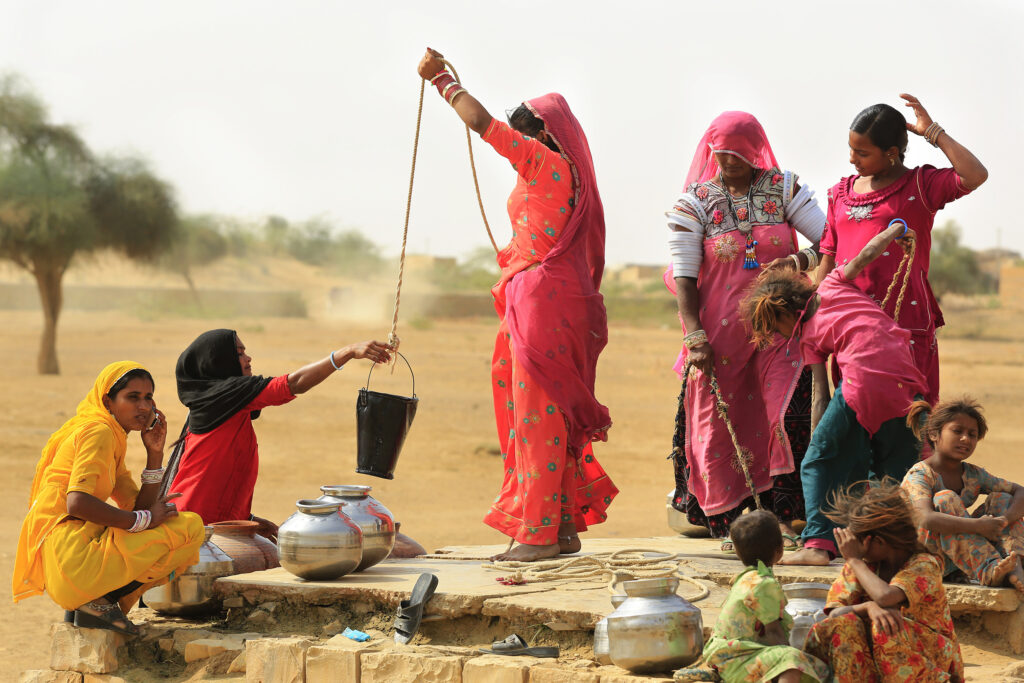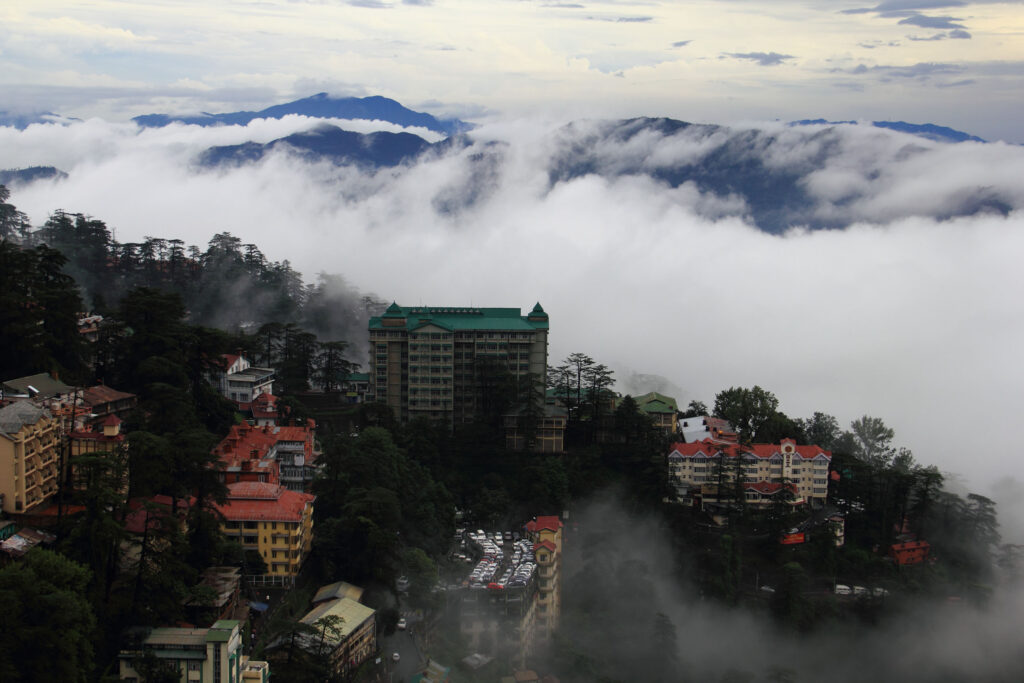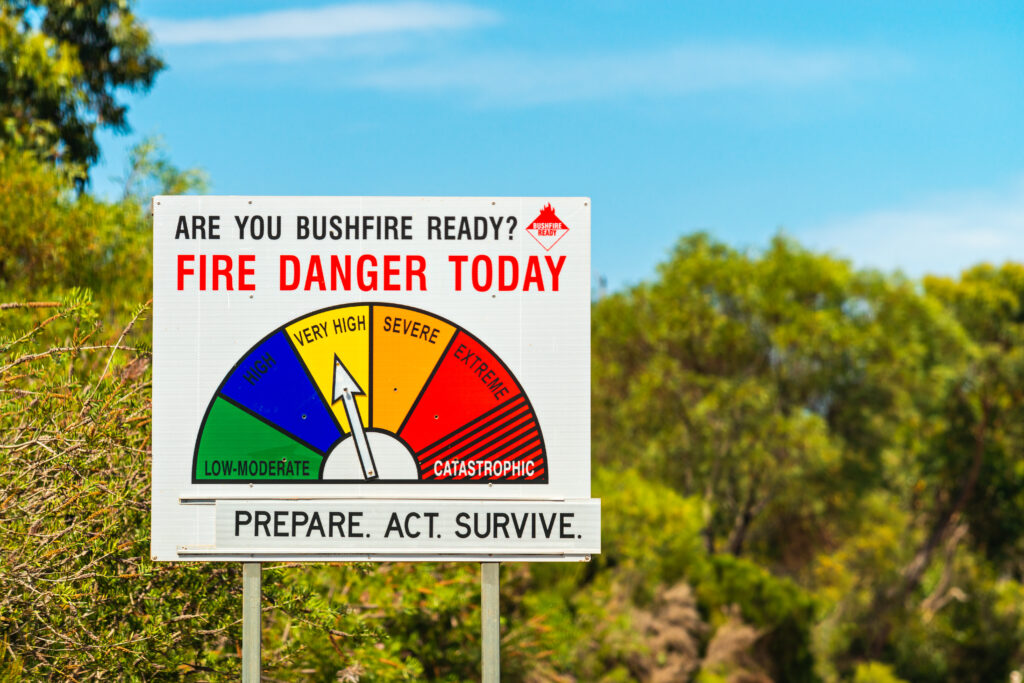The impacts of climate change in India are creating an environmental and humanitarian crisis in the nation’s densely-populated mountain regions. At the heart of the issue lies the rapid warming of the Himalayas. A worrying trend shows the region is heating up faster than all other mountainous ranges in the world, with profound implications for its people and their livelihoods.
A Snowless Winter in India’s Mountains
Emeritus Professor Prakash C. Tiwari, from Kumaun University in India’s Himalayan state of Uttarakhand, is deeply passionate about highlighting the severe issues posed by climate change in the Himalayan region. “Over the last 75 years, Himalaya has experienced a 0.1°C increase in the average temperature every decade,” he explains. Projections indicate a 2.5°C to 2.8°C rise by the end of the century, he added.
Prakash has researched the impacts of climate change on the region extensively, and his affiliations include the International Centre for Integrated Mountain Development (ICIMOD), among many other national and international organisations. As well as rapid warming, he warns of the steep decline in rainfall and snowfall across the entire Himalayan stretch, spanning almost 4,000 km, which is of critical concern. “Winter precipitation, in particular, has declined drastically,” he said, notably in the western part of India’s Himalayan region – which includes Jammu and Kashmir, Ladakh, Uttar Pradesh and Uttarakhand.
“Right now, I’m in the heart of the Western Himalaya in Uttarakhand. We did not receive a significant amount of rainfall during the entire winter season [2023-24]. Normally we would receive 20% of the annual rainfall during winter,” said Prakash. “So now, the entire western Himalayan region is facing severe drought conditions, with no significant rainfall and no snowfall at all.” It is not only India suffering these dry winters, he highlighted. The entire Hindu Kush Himalayan region – also covering Pakistan, Nepal and Bhutan – is suffering from the same decline in rain and snowfall trends.
Extreme Weather Events and Disasters: Glacial Flood and Landslide Risks
Adding to the crisis is the increasing frequency and intensity of extreme weather events. Severe rainfall events, for example, have been increasing continuously over the past 15 to 20 years, heightening the risk of climate change-induced natural disasters.
“The increasing temperatures and severe rainfall is creating a very severe risk to the glacial lakes located in the Great Himalayan ranges,” said Prakash. “With climate change, the glacial lakes are melting, and they are creating a very, very severe risk for the downstream population. The towns, cities, villages, critical infrastructure agriculture, livestock, livelihoods — everything is at risk.”

Prakash recounts Uttarakhand’s catastrophic glacial lake outburst flood in 2013, originating from the Chorabari glacial lake near the Mandakini River. The disaster resulted in widespread devastation and tragically killed more than 6,000 people. In October 2023, another glacial lake burst in the eastern Himalayan state of Sikkim and damaged roads, bridges, infrastructure, towns and villages, with at least 40 people killed. Prakash added that a recent government declaration identifies more than 1,000 glacial lakes at risk of outburst in India’s Himalayan ranges alone.
Severe rainfall is also making landslides more frequent, particularly in the middle Himalayan ranges. “These are densely populated and inhabited by some of the poorest people of the world,” he said. “We have been experiencing very severe and frequent landslides – particularly along roads and urbanised areas – where the deforestation has made the landscape highly vulnerable.” Prakash’s research has found that 60% of the urban areas in the Indian Himalayan region are located in environmentally unsafe areas and are at high risk of landslides.
Global Warming in India Causing Profound Harm to Communities and Ecosystems
Climate change and its related disasters are also having a destructive impact on Himalayan ecosystems, causing losses to forests and biodiversity that are fundamental to livelihoods. Adding to this, the increased temperature and declining rainfall are depleting the water sources, and in turn food security. “We are facing more and more incidences of crop failure, when 50% of the expected production declines,” said Prakash. “It is having a direct impact on the community. They are becoming more and more food insecure with each passing year.”
The loss of food security and livelihood opportunities is forcing people to migrate from the regions, as many are left with no choice but to seek income sources elsewhere and send back remittances to support those left behind. “Climate change and climate change-induced natural disasters have, therefore, emerged as one of the major drivers of rural out-migration in the Himalayas,” said Prakash.
Declining water supplies also means issues for sanitation, safe drinking water and water-borne diseases. Alongside nutrition and food insecurity, this is driving healthcare issues in the region. “Women are the worst affected because they remain in the villages to take care of agriculture, livestock, children and natural resources,” he said. “So, it is the women and children that are most exposed to these climate change impacts.”
Urgent Need for Climate Adaptation and Sustainable Development Plans
With India’s mountain regions and communities gravely threatened by climate change, there is a critical need for robust sustainable development plans for these fragile environments. “The mountains are the most underdeveloped and marginalised regions of the world,” said Prakash, adding that mountain resources are being exploited, and there is a lack of concern and action surrounding the localised impacts of climate change.
“We need sustainable urban development plans for the Himalayan region. We don’t have any land use policy, or any urban development planning, or local level climate change adaptation plan,” explained Prakash. “But, one very important thing the Himalaya community has is rich and diverse citizen science on the impacts of climate change. People are perceiving and responding to the impacts of climate change without any scientific intervention from the government.”
Authorities must bring mountain regions and their people into the mainstream of sustainable development, Prakash emphasised, and plans must consider the specific vulnerability and fragility of the region. The contribution of traditional owners to the conservation of the environment should also be recognised and highlighted, and climate adaptation must involve local community knowledge and evolve at the local level, he said.
Evelyn Smail
Writer, United Kingdom
Evelyn is a freelance writer and journalist specialising in climate science and policy, the just energy transition and the human impacts of climate change. She writes for independent publications, NGOs and environmental organisations. Evelyn has a background in sustainable development, climate justice and human rights.
Evelyn is a freelance writer and journalist specialising in climate science and policy, the just energy transition and the human impacts of climate change. She writes for independent publications, NGOs and environmental organisations. Evelyn has a background in sustainable development, climate justice and human rights.

